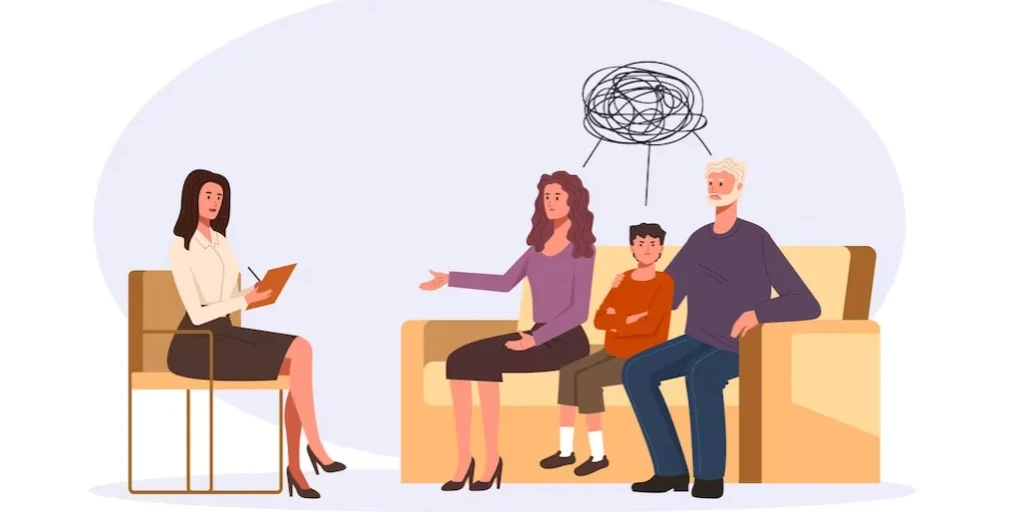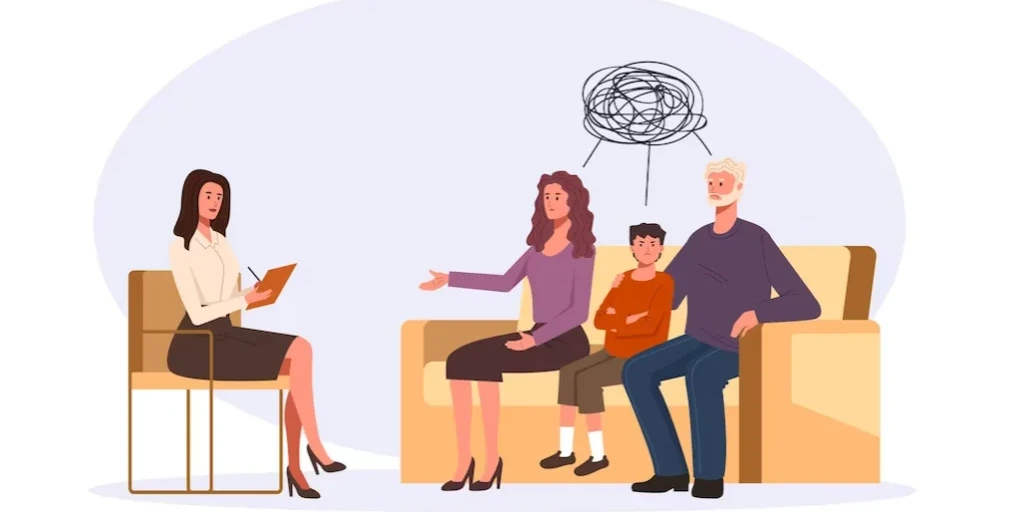24/7 Helpline:
(866) 899-221924/7 Helpline:
(866) 899-2219
Learn more about Ecstasy Rehab centers in Sahuarita
Ecstasy Rehab in Other Cities

Other Insurance Options

Access to Recovery (ATR) Voucher

BlueCross

Sliding scale payment assistance

Coventry Health Care

Lucent

Sutter

Horizon Healthcare Service

Choice Care Network

State Farm

Optum
Beacon

CareSource

Amerigroup

Health Net

Aetna

Self-pay options

Group Health Incorporated

Molina Healthcare

Ceridian

UMR




Amity Foundation at Circle Tree Ranch
Located just east of Tucson, Arizona, Amity Foundation at Circle Tree Ranch provides alcohol and dru...

Palo Verde Behavioral Health
Palo Verde Behavioral Health is a private rehab located in Tucson, Arizona. Palo Verde Behavioral He...

Sierra Tucson
Located in Tucson, Arizona, Sierra Tucson is an alcohol and drug rehab center that offers addiction ...

La Frontera Center – Thornydale Ranch
La Frontera Center - Thornydale Ranch, located in Tucson, Arizona, is an alcohol and drug rehab cent...

Center for Behavioral Health
Center for Behavioral Health is a private rehab located in Tucson, Arizona. Center for Behavioral He...

TYLA – Turn Your Life Around Counseling and Recovery Center
TYLA – Turn Your Life Around Counseling and Recovery Center is a non-profit rehab located in Tucson,...

Cope Behavioral Services – Mesquite
COPE Community Services - Mesquite Clinic is a non-profit rehab located in Tucson, AZ. COPE Communit...

Desert Star Addiction Recovery Center
Desert Star Addiction Recovery Center is a dual-diagnosis addiction treatment rehab located in Tucso...

COPE Community Services
COPE Community Services is a private rehab located in Tucson, Arizona. COPE Community Services speci...

ARC – Arizona Rehab Campus
ARC, located in Tucson, Arizona, provides fully integrated care to men and women who are living with...

La Frontera Center
La Frontera Center, located in Tucson, Arizona, provides a wide variety of services for individuals ...

Sabino Recovery
Sabino Recovery specializes in the treatment of trauma. The 35-day residential treatment center is a...

CODAC at Country Club
CODAC at Country Club is an alcohol and drug rehab center in Tucson, Arizona that offers addiction t...

Resilient Health – Youth & Family
Resident Health - Youth and Family is a behavioral health center in Tucson, Arizona that provides me...

Cottonwood Tucson
Arizona's Cottonwood Tucson is an alcohol and drug rehab facility that offers addiction treatment. T...

Counseling and Consulting Services
Counseling and Consulting Services is an outpatient rehab located in Tucson, AZ. Counseling and Cons...

Helping Ourselves Pursue – Enrichment
Helping Ourselves Pursue - Enrichment supports individuals through community-based programming in Tu...

Tohono O’odham Nation – Behavioral Health
Tohono O’odham Nation - Behavioral Health, in Sells, Arizona, is a behavioral healthcare center that...

CODAC at Alvernon
CODAC at Alveron, located in Tucson, Arizona, provides mental health treatment and alcohol and drug ...

Pathways of Arizona – Ina Road
Pathways of Arizona – Ina Road is a private rehab located in Tucson, Arizona. Pathways of Arizona – ...

Next Step Counseling
Next Step Counseling offers alcohol and drug rehab and behavioral health care services to individual...

La Frontera Center – Hope Center
Located in Tucson, Arizona, La Frontera Center is a mental health and alcohol and drug rehab center ...

Behavioral Awareness Center
Behavioral Awareness Center Where we Change Lives Walk in's Welcome No Appointment Needed. We also a...

Perception Counseling
Perception Counseling, located in Tucson, Arizona, provides behavioral health care and mental health...

Gospel Rescue Mission – Women and Children’s Center
Gospel Rescue Mission - Women and Children’s Center is a women’s recovery center located in Tucson, ...

Center for Life Skills Development
Center for Life Skills Development is an alcohol and drug rehab, mental health treatment, and behavi...

Mental Health Center – Behavioral Health
Mental Health Center, located in Marana, Arizona, offers mental health, behavioral health, and dual ...

Arizona Family Therapy
Arizona Family Therapy is a private rehab located in Tucson, Arizona. Arizona Family Therapy special...

CODAC Administrative Office – Fontana Plaza
The CODAC Administrative Office Fontana Plaza facility stands as a CARF-accredited addiction treatme...

CODAC – Women’s Recovery Services – Las Amigas
CODAC - Women’s Recovery Services - Las Amigas, located in Tucson, Arizona, is a women’s-only alcoho...

U of A – Department of Psychology
U of A - Department of Psychology, located in Tucson, Arizona, educates students interested in a psy...

Pathways of Arizona
Pathways of Arizona offers alcohol and drug rehab services and dual diagnosis treatment to individua...

Reflections Family Services
Reflections Family Services offers alcohol and drug rehab services, behavioral healthcare, and menta...

In Balance Counseling
In Balance Counseling is a private rehab located in Tucson, AZ. In Balance Counseling specializes in...

La Frontera – East Clinic
La Frontera – East Clinic is a private rehab located in Tucson, Arizona. La Frontera – East Clinic s...

Pascua Yaqui Tribe of Arizona
Pascua Yaqui Tribe of Arizona is a public rehab located in Tucson, Arizona. Pascua Yaqui Tribe of Ar...

The Haven – Intensive Outpatient
The Haven - Intensive Outpatient is a recovery program in Tucson, Arizona. Their alcohol and drug re...

CODAC at Cobblestone Court
CODAC at Cobblestone Court is a drug and alcohol rehab located in Tucson, AZ. They provide outpatien...

The Haven – Residential
The Haven provides effective, affordable substance use recovery for women in a family-inclusive envi...

Tucson Teen Challenge – Men’s Induction Center
Tucson Teen Challenge - Men’s Induction Center, located in Tucson, Arizona, offers alcohol and drug ...

Men’s Pascua Assessment Treatment and Healing – PATH
Men’s Pascua Assessment Treatment and Healing - PATH, located in Tucson, Arizona, is a men's-only al...

Pascua Yaqui Tribe of Arizona – CSP
Pascua Yaqui Tribe of Arizona - CSP, located in Tucson, Arizona, offers alcohol and drug rehab servi...

Sonora Behavioral Health Hospital
Sonora Behavioral Health Hospital, in Tucson, Arizona, provides mental health care and addiction rec...

La Frontera Psychiatric Health
La Frontera Psychiatric Health is a psychiatric treatment facility in Tucson, Arizona that addresses...

Mercy House Recovery Systems
Mercy House Recovery Systems is an alcohol and drug rehab center and mental health treatment center ...





























COPE Community Services on 5th
COPE Community Services Inc is a dual diagnosis outpatient clinic offering medication assisted treat...

CODAC at 380
CODAC at 380 provides alcohol and drug rehab treatment services to men and women seeking recovery in...

El Sol Nuevo Outpatient Clinic
El Sol Nuevo Outpatient Clinic is an alcohol and drug rehab center and mental health treatment cente...

Your First Step
Your First Step is an alcohol and drug rehab center in Tucson, Arizona that provides addiction treat...

Compass Healthcare – Detox
Compass Healthcare - Detox offers alcohol and drug rehab services to men and women seeking recovery ...

CODAC Health Recovery and Wellness – East Broadway
CODAC Health Recovery and Wellness - East Broadway, located in Tucson, Arizona, is an alcohol and dr...

Tucson Alcoholic Recovery Home
Tucson Alcoholic Recovery Home, located in Tucson, Arizona, is an alcohol and drug rehab center that...

Perspectives Counseling Services
Perspectives Counseling Services is an alcohol and drug rehab center that offers addiction treatment...

COPE Community Services – Shepherd House
COPE Community Services – Shepherd House focuses on the treatment of dual diagnosis and mental healt...

Gospel Rescue Mission – Men’s Center
Gospel Rescue Mission - Men’s Center, located in Tucson, Arizona, offers emergency shelter residence...

Zarephath – Tucson
Zarephath offers outpatients and inpatients treatment for families whose children have a Mental Heal...

Casa de Palmas Drug Rehab Center
Casa de Palmas Drug Rehab Center, located in Tucson, Arizona, is an alcohol and drug rehab facility ...

Mirasol – North Swan Road
Mirasol - North Swan Road, located in Tucson, Arizona, is an alcohol and drug rehab center that prov...

Fuerza Esperanza Counseling
Fuerza Esperanza Counseling is a private rehab located in Tucson, Arizona. Fuerza Esperanza Counseli...

Mirasol
Mirasol, located in Tucson, Arizona, offers eating disorder treatment for women through an age-speci...

New Hope Behavioral Health Center
New Hope Behavioral Health Center is a private rehab located in Tucson, Arizona. New Hope Behavioral...

Joan McNamara Center for New Directions
Joan McNamara Center for New Directions is a private rehab located in Tucson, Arizona. Joan McNamara...

COPE Community Services – La Cholla
COPE Community Services - La Cholla, located in Tucson, Arizona, offers alcohol and drug rehab progr...

La Frontera Arizona – Broadway Boulevard
La Frontera Arizona – Broadway Boulevard is a private rehab located in Tucson, Arizona. La Frontera ...

La Frontera Center – Sonora House
La Frontera Center - Sonora House is an alcohol and drug rehab center that offers addiction treatmen...

Casa Santa Clara Transitional Living
Casa Santa Clara Transitional Living is a private rehab located in Tucson, Arizona. Casa Santa Clara...

Wesley Rehabilitation and Counseling Service
Wesley Rehabilitation and Counseling Services provides alcohol and drug rehab services to men and wo...

Abbey Pastoral Counseling Center
Abbey Pastoral Counseling Center offers addiction treatment through their alcohol and drug rehab pro...

La Frontera Center – Mountain Rose
La Frontera Center – Mountain Rose is a private rehab located in Tucson, Arizona. La Frontera Center...

Serenidad Counseling Services
Serenidad Counseling Services is a private rehab located in Tucson, Arizona. Serenidad Counseling Se...

La Frontera Arizona – New Life Center
La Frontera Arizona - New Life Center, located in Tucson, Arizona, offers alcohol and drug rehab ser...

La Frontera Center – Pima House
La Frontera Center - Pima House provides comprehensive addiction treatment through their alcohol and...

LA Canada Adolescent Substance
LA Canada Adolescent Substance is a private rehab located in Tucson, Arizona. LA Canada Adolescent S...

Compass Healthcare
Compass Healthcare, located in Tucson, Arizona, offers alcohol and drug rehab services to men, women...

La Frontera Center – Casa de Vida
La Frontera Center–Casa de Vida, in Tucson, Arizona, is an integrative drug and alcohol rehab for ad...

PBSI Behavioral Health Clinic
PBSI Behavioral Health Clinic is a private rehab located in Tucson, Arizona. PBSI Behavioral Health ...

PPEP Behavioral Health
PPEP Behavioral Health, located in Tucson, Arizona, offers treatment for mental health concerns, dua...

Valley Health Care and Rehabilitation Center
Valley Healthcare and Rehabilitation Center, located in Tucson, Arizona, provides senior care in a r...

Alpha Omega Counseling
Alpha Omega Counseling is a private rehab located in Tucson, Arizona. Alpha Omega Counseling special...

Providers of Enrichment Services – Silverado
Provider of Enrichment Services - Silverado is a mental health treatment center that provides treatm...

Handlers DTT
Handlers DTT provides alcohol and drug rehab services and mental health treatment to individuals str...

Encourage Arizona
Encourage Arizona, located in Tucson, Arizona, offers employment consulting services to men and wome...

Fortune Counseling Services
Fortune Counseling Services is a private rehab located in Tucson, Arizona. Fortune Counseling Servic...

Southwest Rehabilitation Associates
Southwest Rehabilitation Associates is an outpatient rehab located in Tucson, AZ. Southwest Rehabili...

Pima Prevention Partnership – Sin Puertas
Pima Prevention Partnership - Sin Puertas, located in Tucson, Arizona, is a community-based behavior...

Cactus Counseling Associates
Cactus Counseling Associates is a private rehab located in Tucson, Arizona. Cactus Counseling Associ...

Cope Behavioral Services – Ocotillo
Cope Behavioral Services–Ocotillo is located southeast of Phoenix in Tucson, Arizona. They provide s...

Perspectives Counseling
Perspectives Counseling, located in Tucson, Arizona, is a mental health and behavioral health counse...

COPE Community Services
COPE Community Services is a private rehab located in Green Valley, Arizona. COPE Community Services...

Transitional Living Communities
Transitional Living Communities offers transitional living homes to individuals who are undergoing a...

Southwest Sober Living
Southwest Sober Living is an alcohol and drug rehab sober living home in Tucson, Arizona that provid...

Compass Healthcare – Vida Serena
Compass Healthcare - Vida Serena, located in Tucson, Arizona, offers alcohol and drug rehab treatmen...

COPE Community Services – Substance Abuse
COPE Community Services - Substance Abuse, located in Tucson, Arizona, offers treatment to individua...

Recovery Counseling Services
Recovery Counseling Services is an alcohol and drug rehab center in Tucson, Arizona that provides ad...

Native Spirit Consulting
Native Spirit Consulting is a private rehab located in Tucson, Arizona. Native Spirit Consulting spe...

CODAC Behavioral Health Services – Young Adult Services
CODAC Behavioral Health Services - Young Adult Services, located in Tucson, Arizona, offers mental h...

TASC – Treatment Assessment Screening Center
TASC - Treatment Assessment Screening Center offers alcohol and drug rehab screening tests in Tucson...

Summit Services
Summit Services is a private alcohol and drug rehab center in Tucson, Arizona that provides addictio...

Burning Tree West
Burning Tree West offers inpatient services for young adults who are struggling with a Substance Add...

Providers of Enrichment Services – Manzanita
Providers of Enrichment Services - Manzanita provides treatment for individuals struggling with ment...

Recovery In Motion
Recovery In Motion Treatment Center is an accredited dual-diagnosis addiction treatment center in Tu...

TASC – Treatment Assessment Screening Center – West Drachman
TASC - Treatment Assessment Screening Center - West Drachman, located in Tucson, Arizona, is an alco...

CODAC Behavioral Health Services – Step Forward
CODAC Behavioral Health Services - Step Forward, located in Tucson, Arizona, provides specialized ca...

AA – Alcoholics Anonymous – South 6th Avenue
AA - Alcoholics Anonymous - South 6th Avenue, located in Tucson, Arizona, is a 12-Step program that ...

Devereux Advanced Behavioral Health – Esperanza
Devereux Advanced Behavioral Health - Esperanza, located in Tucson, Arizona, is an alcohol and drug ...

Devereux Advanced Behavioral Health – Casa Amistad – Respite House
Devereux Advanced Behavioral Health - Casa Amistad - Respite House offers behavioral health care and...

AA – Alcoholics Anonymous – South Campbell Avenue
AA - Alcoholics Anonymous - South Campbell Avenue, located in Tucson, Arizona, offers peer-led addic...

AA – Alcoholics Anonymous
AA – Alcoholics Anonymous is a non-profit rehab located in Vail, Colorado. AA – Alcoholics Anonymous...































































































































































































































